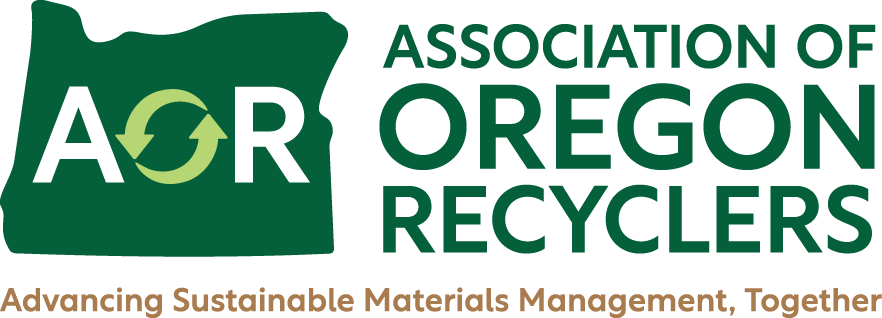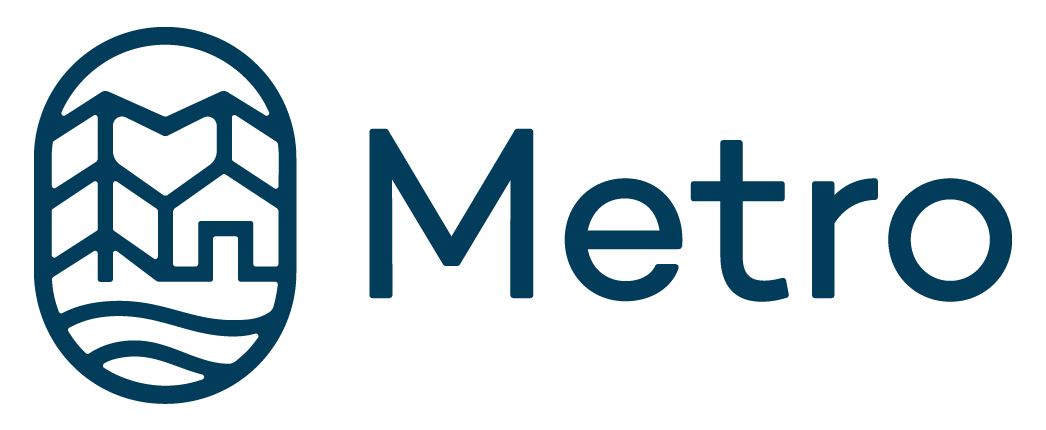SESSION SUMMARY: Materials, Climate, and Justice at the Intersection of Food and the Built Environment
This is a summary of "Materials, Climate, and Justice at the Intersection of Food and the Built Environment," one of Sustainable Oregon 2021's virtual conference sessions. Scholarship recipients are asked to write a blog post about one of the sessions they attend. Thank you to our Scholarship Sponsor Metro for funding scholarships for this year's conference. This session was sponsored by the City of Portland Bureau of Planning and Sustainability. A special thank you to Sustainable Oregon 2021's Title Sponsor Waste Connections.
Written by: Alice Rotsztain
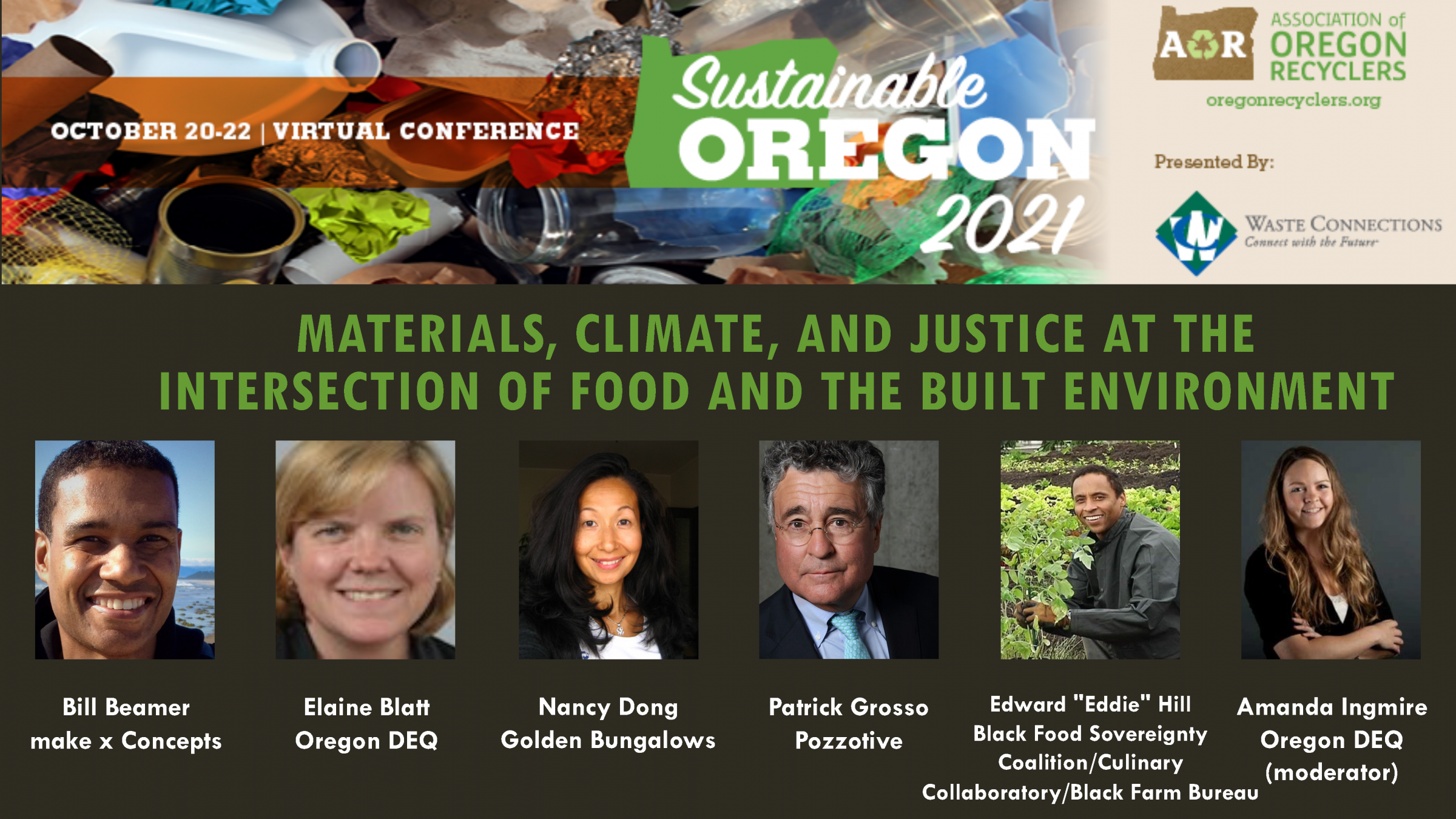 This session focused on two areas important to the larger climate goals established by DEQ: food and the built environment. Both sectors are major contributors to Oregon's climate impact separately, and together, their intersection brings up interesting issues to the environment, climate justice, and innovative solutions to existing waste challenges.
This session focused on two areas important to the larger climate goals established by DEQ: food and the built environment. Both sectors are major contributors to Oregon's climate impact separately, and together, their intersection brings up interesting issues to the environment, climate justice, and innovative solutions to existing waste challenges.
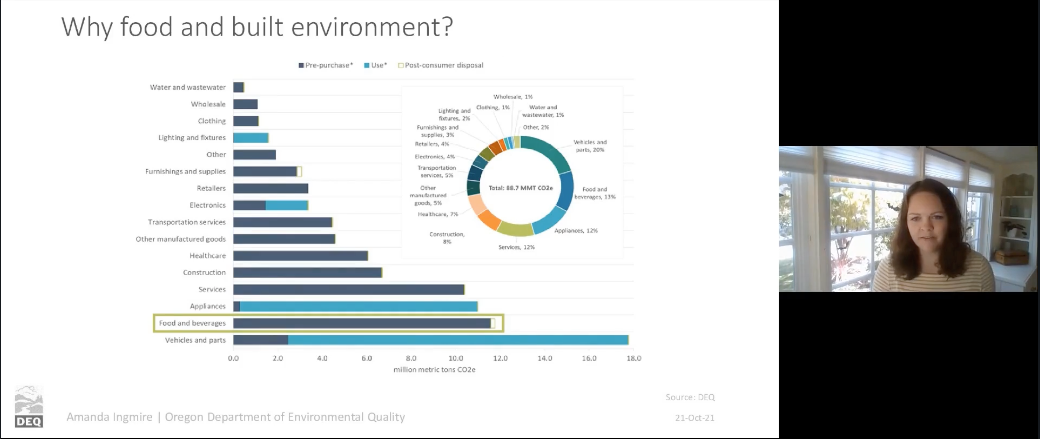
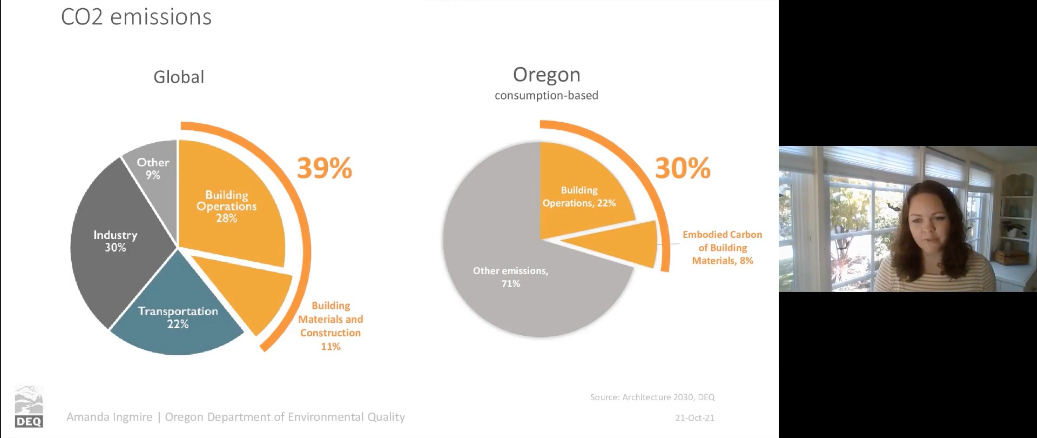
Panelists invited to speak were two building materials innovators, Patrick Grasso and Nancy Dong (at different stages of product development); Bill Beamer, a climate justice advocate (formerly at City of Portland); and a DEQ researcher, Elaine Blatt.
Topics presented included:
Two innovative materials targeting the building trades were introduced: Pozzotive (ground recycled glass with concrete) by Patrick Grasso and Hempcrete (industrial hemp fibers with lime) by Nancy Dong.
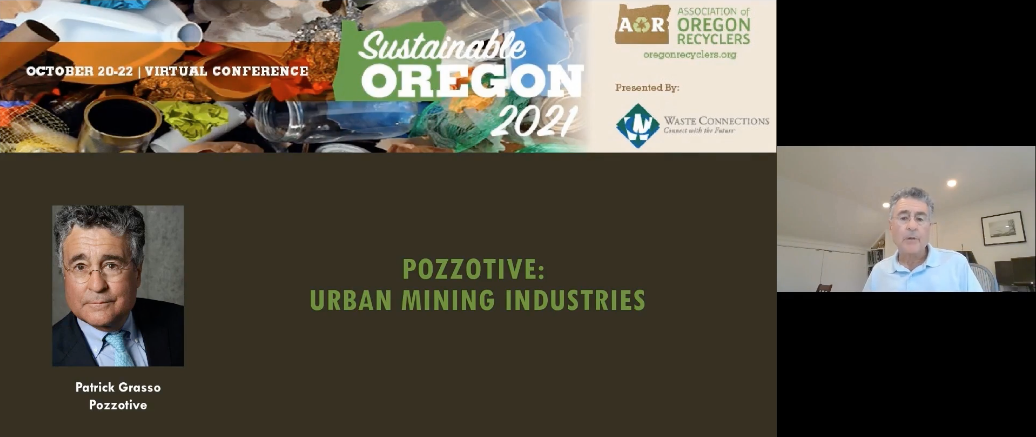
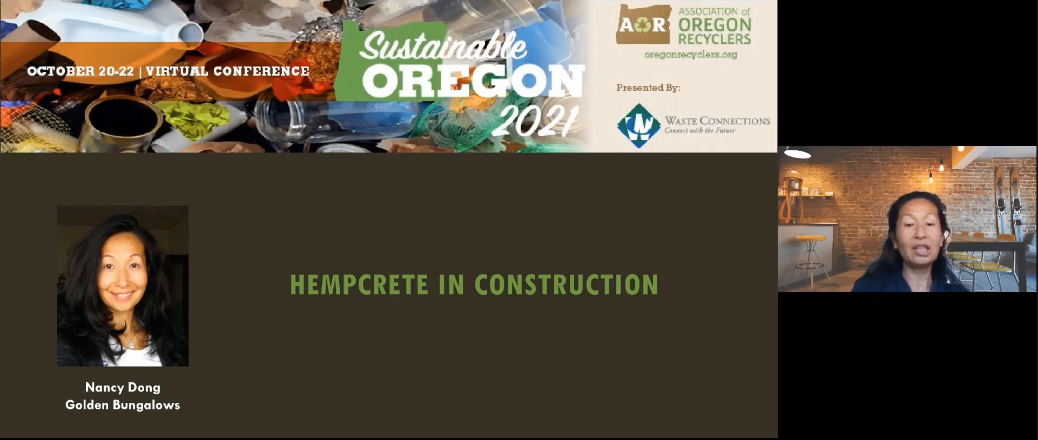
Industrial hemp was discussed by Bill Beamer as an interesting crop for multiple factors (not just as a material for building, but for its carbon-sequestering abilities; a broader topic of how things are done (i.e. who benefits from innovation support) in relation to climate justice was also interwoven into the story of hemp.
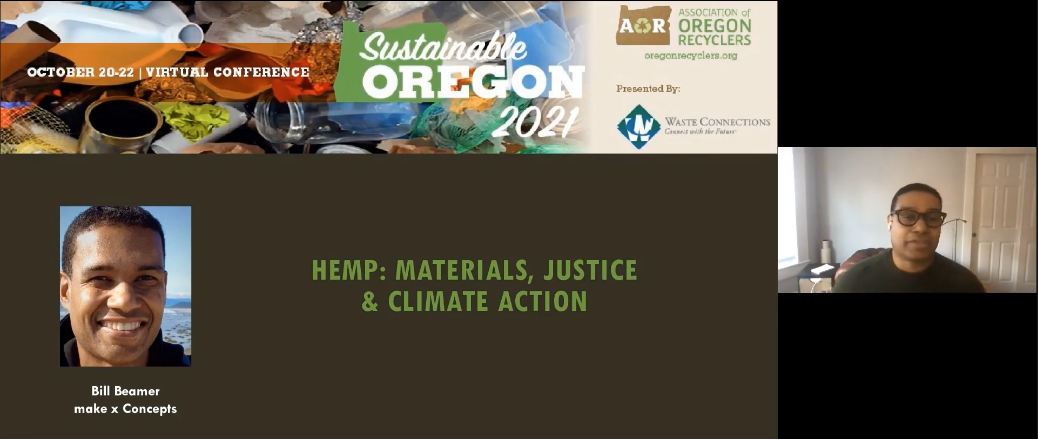
Lessons learned from Elaine Blatt on the topic of food diversion projects in close partnership with the Oregon Food Bank: issues raised about harms to communities when the objective is framed from only a waste diversion outlook. A story of caution for more thoughtful design of projects related to food.
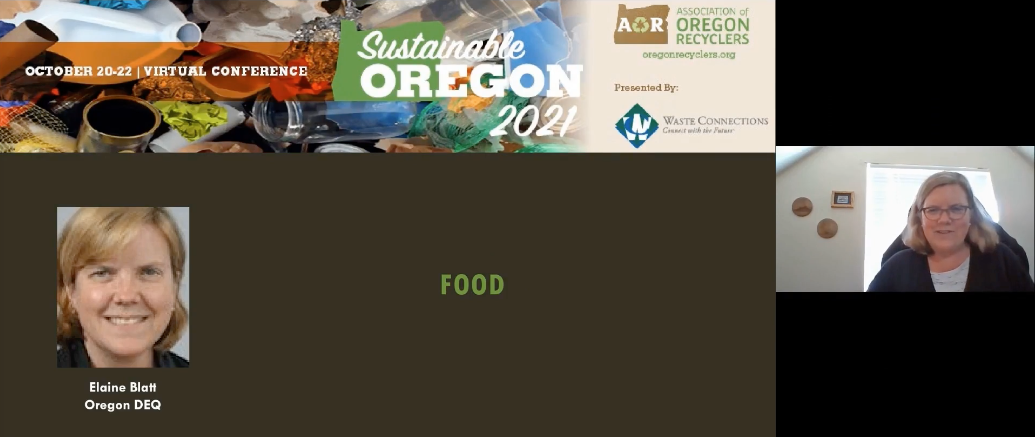
Panel presentations introduced some unexpected findings upending common ideas about recycling and the materials management hierarchy. Of note was the common assumption that “recycling” is more beneficial than “downcycling." In the case of Pozzotive, when looking at recycled glass pozzolan’s ability to lower cement’s carbon footprint vs. the energy outputs needed to recycle glass back into bottles, an argument is that the savings of carbon impact favors Pozzotive (downcycling) over recycling glass.
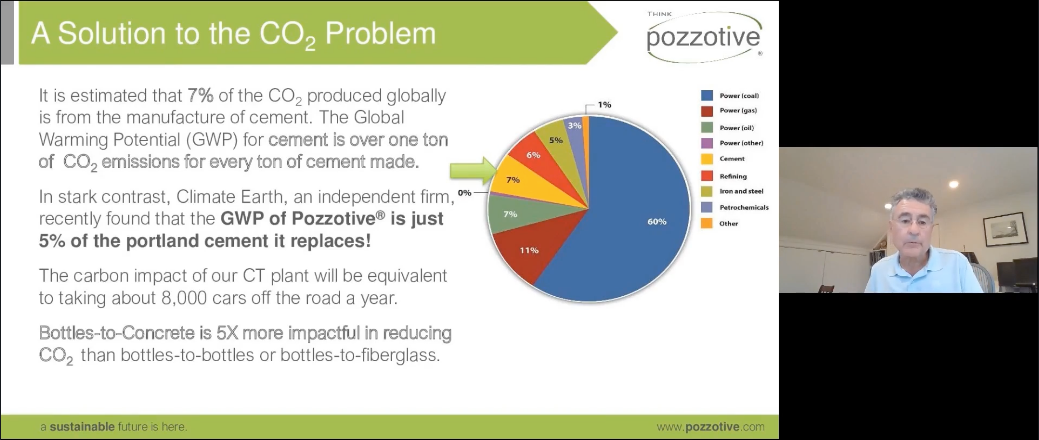
And in the case of food recovery (in relation to the materials management hierarchy), the notion that not all foods are equal or appropriate for all people in terms of edibility, nutrition, cultural fit, and health. If projects that target food support come from only a lens of waste diversion, many harms can be created for communities. A more nuanced approach acknowledges the importance of supporting community food needs - with projects such as regenerative/urban agriculture and dry-farming practices, rather than a focus on food waste diversion that is indiscriminately diverted to food-insecure communities.
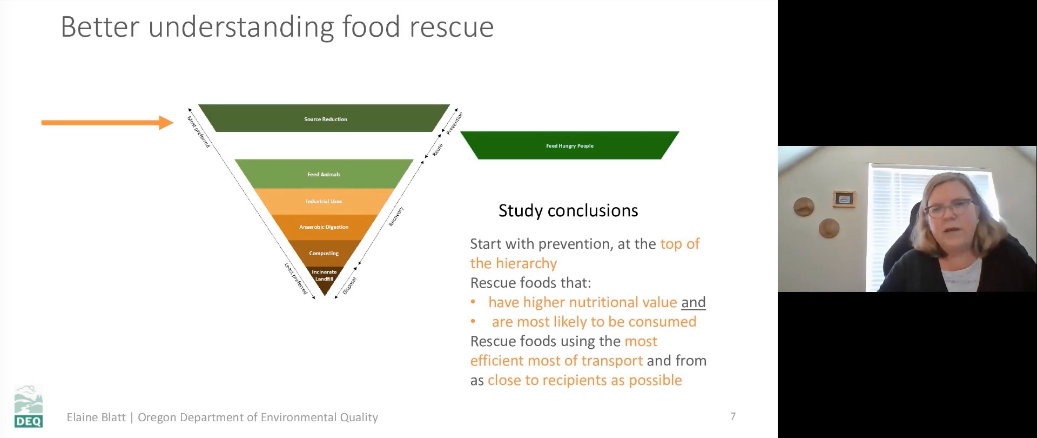
Key Takeaways
- Food/agriculture and the building industries are key contributors to Oregon’s climate impact.
- Many new innovations are not new (founded from ancient techniques and existing traditions); what becomes viable/possible at any moment in time (including now) is more a matter of priorities and economic support (government or market-based).
- Economics is also key to social justice remedies; which communities benefit from economic support to create new innovations matters. Who is at the table and whose priorities receive support and funding.
- Harms to communities can happen when only the agenda/goals of government policy are driving societal change processes. With food, because of its special and unique support for community social life/cultural traditions and health/nutrition, issues can be further exacerbated. For this reason, there is a great need for partnership with policy-makers and communities.
- The question of “environmental benefits” is full of surprises - a truly complex topic, depending on how the research is framed. A few specific examples of unexpected findings and an avocation for more holistic research considerations, rather than siloed metrics for measurements.
Final Reflection from the Reviewer
I enjoyed the nuance of the topics presented and the conversations that ensued. In each case, presenters provided stories that helped to celebrate what is possible (in product innovations) alongside presenting the social context for challenges.
Both material innovators couched their presentation with historical/social contexts that go beyond the technology/material and shape product adoption:
- How these techniques are not entirely new (ancient Rome for pozzolans and ancient India and France for hemp building materials)
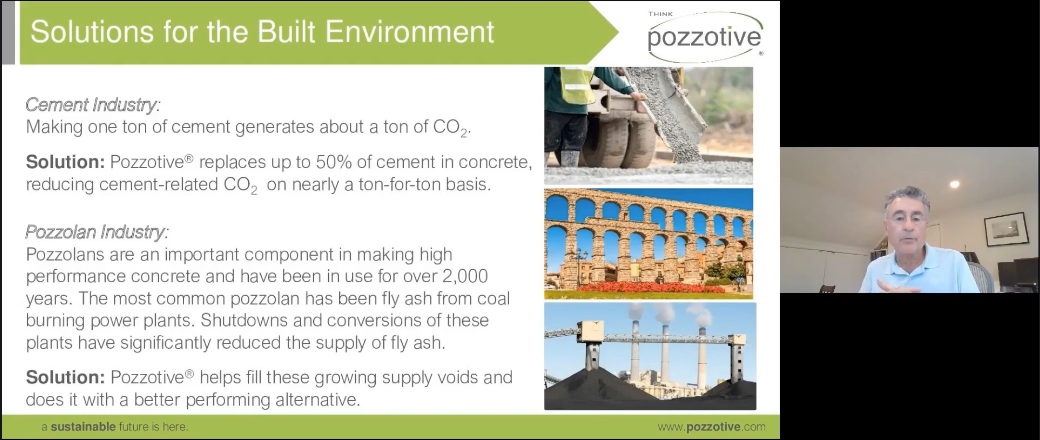
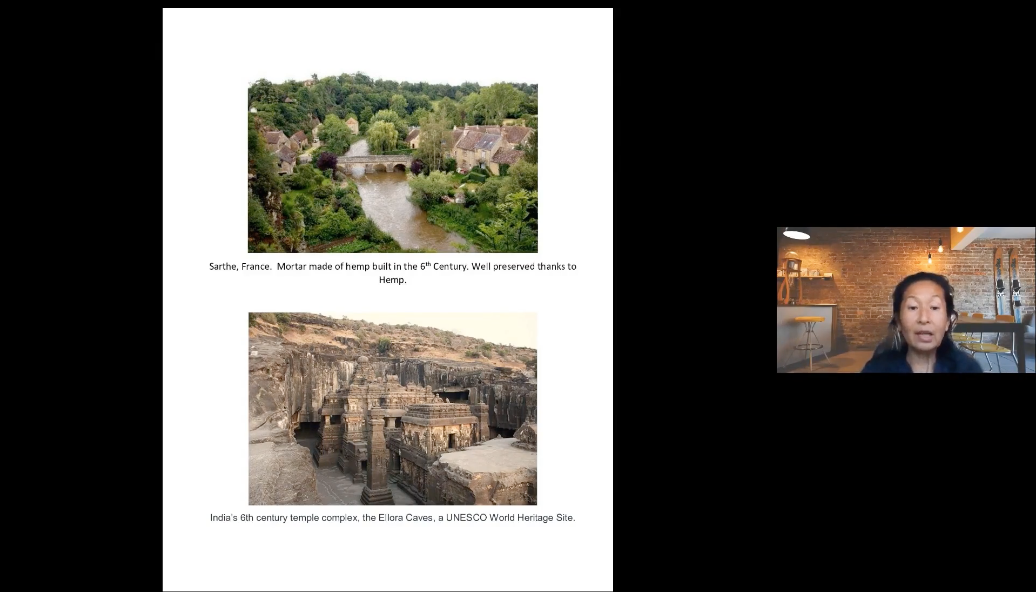
-
How hemp came to lose market share/legal status:
-
Hemp vs. cotton
-
Industrial hemp stigmatized by being associated with marijuana, though, technically two distinctly different plants
-
-
The recent changes in coal ash availability (making Pozzotive more economically viable)
-
The importance of certification (and its considerable effort) to enable building professionals to be willing to use Pozzotive
-
Finally, the large impact that systemic changes (laws and infrastructure) have in shaping innovation possibilities
Together, these stories provided a more honest look into the messiness of innovation - the thing itself (the innovative process, material), although full of potential, is only the seed of the change process that is entangled and embedded with social norms, economic interests, and policy and other players (customers, competitors, governments, industrial standards, suppliers).
I also found Bill Beamer and Elaine Blatt’s perspectives an important contribution to the topic, bringing a wider discussion about social justice issues. By widening the lens beyond a market/industrial focus, to thinking more holistically about which players benefit from innovations, and which are harmed, this brought the conversation back to a central goal when pursuing climate issues: to support the well-being of lives.
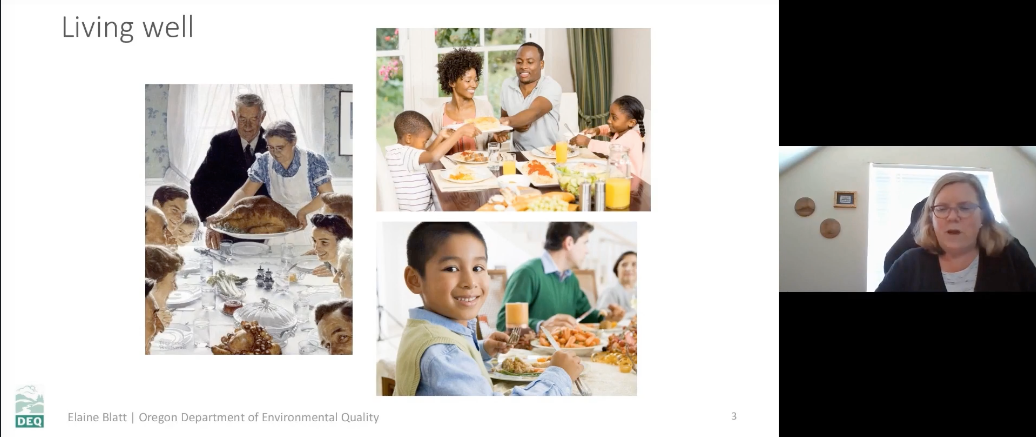
I believe that many people involved in searching for solutions to climate change are motivated by a concern for the well-being of lives. As such, it’s critically important, no matter which niche we occupy in our contribution, not to overlook this fundamental goal: in what ways can we do better, so that we can all live better.
A final important reminder that came from this discussion was just how slippery determining “better” is - the caution that research and data, though excellent tools, are limited tools - the data that we get is heavily framed by the goals/questions framing our research. This reminder was told through the cautionary tale shared by Elaine Blatt about projects that approach food recovery from a waste systems perspective and its harms on communities facing food insecurity and Bill Beamer’s advocacy about expanding research scope, providing a thoughtful challenge to the current limits of past research approaches and asking the questions of who benefits from innovations and who is harmed by climate policy.
